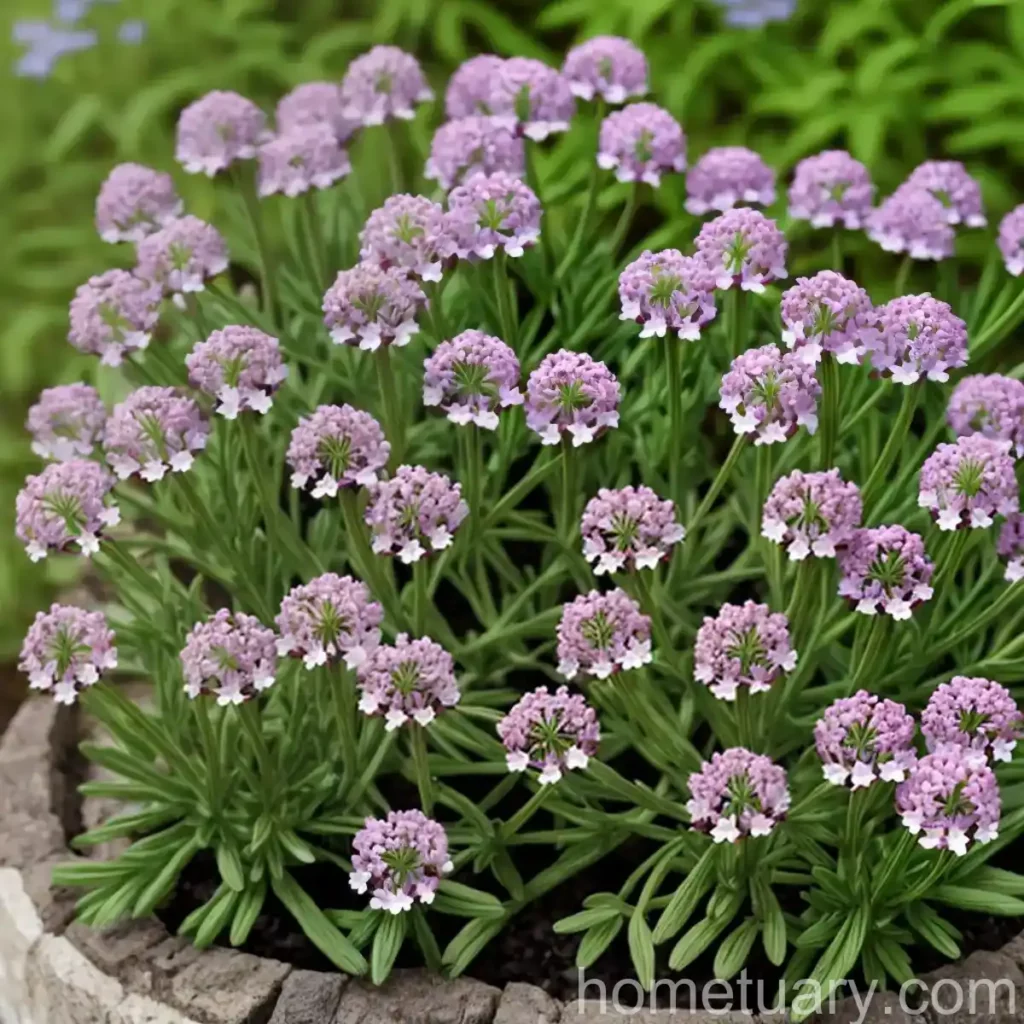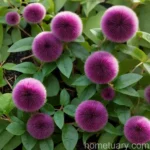Woodruff (Asperula tinctoria): A Fragrant and Medicinal Herb
Plants have been an integral part of human existence for millennia, serving as a source of food, medicine, and raw materials for various cultural and industrial practices. Within the realm of botanical diversity, woodruff (Asperula tinctoria) stands out as a herbaceous perennial plant with a rich history of traditional uses and a fragrant charm that has captivated gardeners and herbalists alike. In this comprehensive guide, we will delve into the world of woodruff, exploring its cultural significance, medicinal properties, and horticultural aspects.
What is Woodruff (Asperula tinctoria)?
Woodruff, scientifically known as Asperula tinctoria, is a perennial flowering plant belonging to the Rubiaceae family. This botanical family encompasses a wide array of plants, including many woody species, but Asperula tinctoria is one of the herbaceous members. The plant is native to Europe and Western Asia, where it thrives in the cool, shaded environments of woodlands, hedgerows, and meadows.
The name “woodruff” is derived from the Old English “woodrufe,” which refers to a plant growing in the wild or deep shaded areas. The genus name “Asperula” is of Latin origin and means “without roughness,” alluding to the smooth texture of the plant’s leaves and stems. The specific epithet “tinctoria” suggests the plant’s historic use as a natural dye source.
Key Takeaways – Woodruff (Asperula tinctoria)
Before delving into the intricate details of woodruff’s cultivation, uses, and folklore, let’s gain a quick overview of the key takeaways associated with this captivating plant:
- Woodruff (Asperula tinctoria) is a shade-loving herbaceous perennial plant, prized for its aromatic foliage and delicate white flowers.
- It holds significant cultural and traditional value, with a rich history of medicinal, culinary, and ornamental uses.
- When properly cultivated, woodruff serves as an excellent ground cover and a valuable addition to shade gardens and naturalized woodland settings.
- The plant’s foliage is renowned for its aromatic properties, often utilized in teas, potpourri, and traditional herbal remedies.
- Due to its long-established use in European folklore and traditional medicine, woodruff holds a special place as a revered and respected plant.
Now that we have a broad understanding of woodruff, let’s explore its cultural significance and the diverse ways it can be utilized.
Cultural Uses of Woodruff
Medicinal Properties of Woodruff
Woodruff has been esteemed for its numerous medicinal properties, particularly in traditional and folk medicine across Europe. The plant’s fragrance is attributed to coumarin, a compound known for its distinctive sweet scent. In herbal medicine, woodruff was historically recognized for its calming and diuretic properties. It was often incorporated into remedies aimed at alleviating restlessness, promoting digestion, and supporting overall well-being. Additionally, woodruff was used to create compresses and infusions for external use, believed to aid in relieving minor skin irritations.
Natural Dyes from Woodruff
Beyond its medicinal applications, woodruff was traditionally employed as a natural dye source. The plant yields a pleasant yellow-green hue, which was utilized to dye textiles and fabrics. This historical use aligns with the species name “tinctoria,” denoting its role in the creation of natural dyes.
Woodruff in Traditional European Cuisine
Woodruff has also been an integral part of traditional European cuisine, particularly in Germany, where it is esteemed for its aromatic and flavor-enhancing qualities. The dried leaves of woodruff were and continue to be used to impart a sweet, hay-like flavor to a renowned German beverage known as “Maiwein,” traditionally consumed during May Day festivities. Furthermore, woodruff finds its way into delectable desserts, beverages, and even spirits, adding a unique and refreshing taste to various culinary creations.
The unique and diverse cultural uses of woodruff underscore its historical and contemporary significance, making it a versatile and cherished plant across different domains.
Growing Woodruff
Woodruff’s Preferred Environment
To successfully grow woodruff, it is crucial to understand its preferred environmental conditions. The plant thrives in partially shaded to fully shaded areas, replicating its native woodland habitat. While it can tolerate some dappled sunlight, direct exposure to intense sun should be avoided, as it may cause the delicate foliage to scorch.
Water Requirements
When it comes to watering, woodruff appreciates consistently moist, well-drained soil. While it is not a waterlogged species, it benefits from regular watering, particularly during dry spells or warm weather. Maintaining a moderate level of soil moisture is essential for fostering healthy growth and vibrant foliage.
Sunlight Considerations
As a shade-loving plant, woodruff is ideally suited for gardens, woodland edges, and areas with limited direct sunlight. When introducing woodruff to the garden, it is important to select a suitable location that provides the necessary shade and protection from harsh midday sun. This ensures that the plant can flourish and showcase its characteristic lush foliage and delicate blooms.
Fertilizing Practices
Woodruff generally thrives in nutrient-rich, humus-laden soil. Incorporating organic matter such as well-rotted compost or leaf mold into the planting site can provide a favorable growing medium for woodruff. While the plant is not overly demanding in terms of fertilization, a balanced application of a slow-release organic fertilizer in spring can help support its growth and vigor.
Soil Preferences
The ideal soil for woodruff is one that is rich in organic matter, well-draining, and slightly acidic to neutral in pH. The plant benefits from a loose, fertile soil structure, which enables its delicate roots to establish and access essential nutrients.
Pruning and Maintenance
Woodruff exhibits a relatively low maintenance nature, requiring minimal pruning and upkeep. Its growth habit typically forms a compact, mounding shape, alleviating the need for extensive pruning or shaping. However, if the plant becomes overgrown or develops sparse foliage, light pruning in early spring can rejuvenate its appearance and stimulate new growth.
Propagation Methods
Division
Propagation of woodruff can be achieved through various methods, with division being a straightforward and reliable approach. Dividing established clumps of woodruff in early spring allows for the creation of new plantings, ensuring the continued presence of this beloved herbaceous perennial in the garden.
Seeds
While woodruff can be grown from seeds, this method can be more challenging compared to propagation through division. Sowing seeds in a prepared seedbed in early spring may yield new plants, but it requires careful attention to watering and environmental conditions to support successful germination and establishment.
Container Popularity
Due to its shade-loving nature and compact growth habit, woodruff is well-suited for container cultivation. This makes it an excellent choice for shaded balconies, patios, and other outdoor spaces where traditional garden planting may be limited. When grown in containers, woodruff can serve as an attractive addition to shaded outdoor areas, lending its fragrant presence to confined spaces.
Woodruff in Landscaping
In addition to its use in containers, woodruff holds significant potential for landscaping in shaded gardens and woodland settings. Its ability to form dense mats of foliage and delicate blooms makes it an appealing choice for naturalistic plantings, where it can thrive as a ground cover, creating a lush and verdant carpet under trees and shrubs.
Common Diseases and Pests
Disease Diagnosis
While woodruff is generally resilient to many common plant diseases, it may occasionally encounter issues such as powdery mildew or leaf spot. These diseases are often the result of environmental stress or unfavorable growing conditions. Regular monitoring and ensuring proper air circulation around the plant can help mitigate the risk of disease development.
Common Pests
Woodruff is relatively resistant to pest infestations, with few pests posing significant threats to its vitality. However, occasional encounters with aphids or spider mites may occur. These pests can be managed through natural predators, such as ladybugs, or through the application of gentle insecticidal solutions if necessary.
Botanist’s Tips for Growing Woodruff
As a plant scientist with a profound appreciation for botanical diversity, I offer the following expert tips to ensure the successful cultivation of woodruff:
- Favorable Shade: Select a shaded location with dappled sunlight or deep shade to accommodate woodruff’s preference for cool, sheltered environments.
- Moisture Management: Maintain consistent soil moisture, particularly during dry periods, to provide the optimal growing conditions for woodruff.
- Organic Enrichment: Enhance the soil with organic matter to create a fertile and well-draining substrate for woodruff’s roots to thrive.
- Periodic Divisions: Periodically divide established woodruff clumps to rejuvenate the plants and propagate new specimens for continued enjoyment.
Fun Facts about Woodruff
- In German tradition, woodruff is a key ingredient in the making of “Maiwein,” a May wine that is enjoyed during May Day celebrations, symbolizing the arrival of spring.
- Woodruff was historically known as a strewing herb, often used to impart a fragrant aroma to indoor spaces when scattered on the floors of dwellings.
- The name “woodruff” may be derived from the Old English “wudrofe,” referring to a plant that grows in the wild or in deep shaded areas.
Links to External Resources
For further exploration of woodruff and related topics, the following external resources provide valuable insights and information:
- RHS – Asperula tinctoria
- Plants for a Future – Asperula tinctoria
- Missouri Botanical Garden – Asperula tinctoria
- Woodruff Plant – A Detailed Overview
As we conclude this exploration of woodruff, it is apparent that this humble yet captivating plant transcends the boundaries of mere ornamentation and extends into the realms of culture, tradition, and herbal lore. With its fragrant foliage, historical significance, and horticultural versatility, woodruff continues to enchant and enrich our lives, serving as a shining example of the profound connection between humans and the plant kingdom. Whether used as a charming ground cover, a key ingredient in traditional concoctions, or a source of natural beauty, woodruff stands as a testament to the enduring allure of nature’s bountiful offerings.
In the words of the German tradition, “Scented May, with woodruff spray.”
So, let us celebrate the essence of woodruff, a fragrant and medicinal gift from the woodlands, and revel in the timeless splendor of this beloved shade-loving perennial.
References:
- Grieve, M. (1971). A Modern Herbal. Courier Corporation.
- Hatfield, A. (2007). How to Enjoy Your Weeds. Lulu.com.















